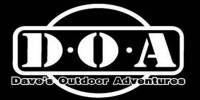|
|
|
|
|
|
|||||||||||||||||||||||||||||||||||||||||||
|
An airfoil is any part of an aircraft designed to produce lift such as the wing and tail surface. The parts of an airfoil include the leading edge, the trailing edge, the chord, and the camber. For a refresher on how an airfoil creates lift, read the section on airfoil or Bernoulli’s lift in the FORCES OF FLIGHT section. The leading edge is the portion of the airfoil that meets the air first. The shape of the leading edge depends on its function. The leading edge of a wing designed for high-speed flight will be very thin. The leading edge of a wing designed for low-speed flight will be relatively thick. The trailing edge is the back of the airfoil where the airflow over the upper surface joins the airflow across the lower surface. The trailing edge must be designed such that when the air flowing over the upper and lower surfaces meets, there is as little turbulence as possible. The chord of an airfoil is an imaginary straight line drawn through the airfoil from its leading edge to its trailing edge. The chord is a baseline from which we can determine how much upper or lower camber there is at any point along the wingspan. The camber of an airfoil is the characteristic curve of its upper or lower surface. The camber determines the airfoil’s thickness. More importantly, the camber determines the amount of lift a wing produces as air flows around it. A high-speed airfoil has very little camber. A low-speed airfoil has a very pronounced camber.
|
